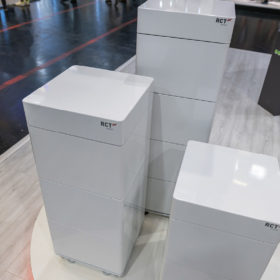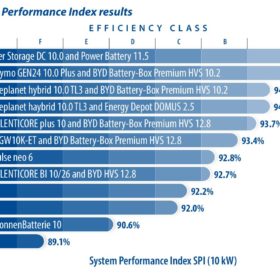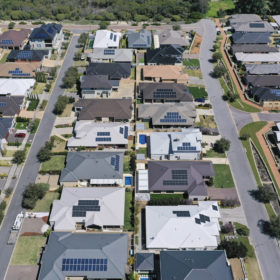Pipelines switch from p-type
A major change is underway, and it may spell the end of p-type PV technology, says Roberto Murgioni, JinkoSolar’s head of technical service and product management EU. Some may doubt n-type’s prospects for deployment in the near-term, but Murgioni reports that at present, the company can’t keep up with demand.
Efficiency and prices determine economics
Estimating the total cost of energy storage connected to a rooftop PV installation is a complex affair, involving factors such as tax, the policy environment, system lifetimes, and even the weather. As part of its extensive overview of distributed energy storage in Germany, pv magazine Deutschland analyzed the efficiency of different battery energy storage systems to create a comparable index that illustrates the cost of a stored kilowatt-hour.
The art of sizing
The ideal size for a battery system depends on the user’s goals. However, with regard to optimizing self-consumption, some calculation programs recommend systems that are too large, explains HTW Berlin. Here, we provide expert tips on the design and interpretation of storage system dimensions seen in pv magazine’s market overview. The outdoor trend discernible in this data is also worthy of further investigation.
Batteries are getting better
Battery energy storage systems (BESS) are getting better, according to the Energy Storage Inspection 2022 report by the University of Applied Sciences, HTW Berlin. The fifth edition of the study assessed 21 storage systems and found that while only two of the BESS studied were categorized as being efficiency class “A” in 2020, that number grew to six in 2022.
First notes of a symphony
Project Symphony provides a glimpse into Western Australia’s energy future, argues the project’s communications lead, Megan Allan. With a large, islanded network featuring high levels of rooftop PV penetration, the pilot on Western Australia’s grid is aggregating residential PV into a virtual power plant (VPP) to participate in a simulated bidirectional wholesale electricity market.
Independent, intelligent distributed energy
Energy drives our cultural and economic progress, and in the long run, humanity itself relies on sustainable energy sources. We are moving towards a future where renewables account for a dominant share of the world’s energy supply, and we know current efforts to tackle climate change are insufficient. Yet, a growing number of investors, businesses and citizens are making changes to the way they live, operate and invest to accelerate the energy transformation.






